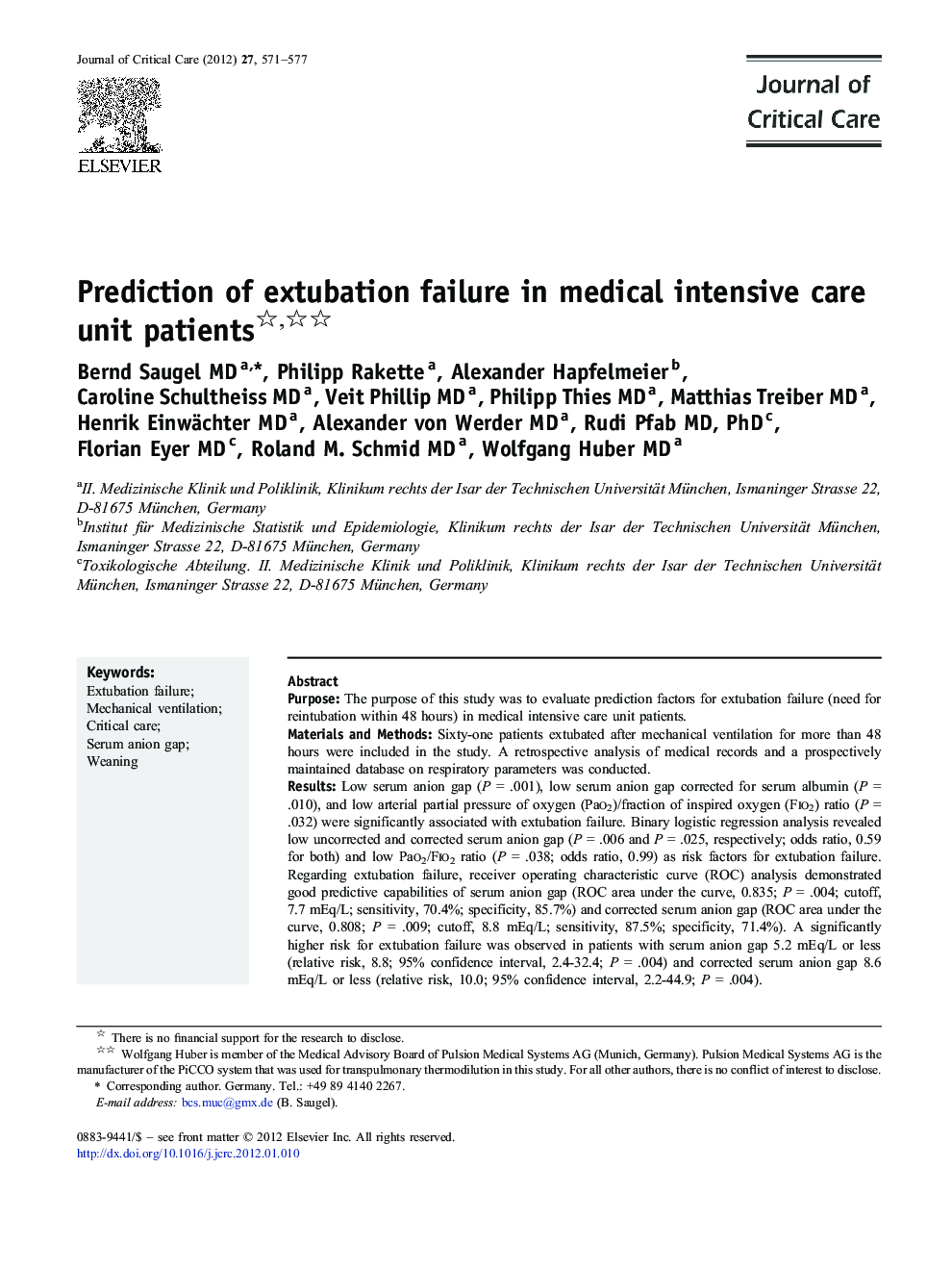| Article ID | Journal | Published Year | Pages | File Type |
|---|---|---|---|---|
| 5886594 | Journal of Critical Care | 2012 | 7 Pages |
PurposeThe purpose of this study was to evaluate prediction factors for extubation failure (need for reintubation within 48 hours) in medical intensive care unit patients.Materials and MethodsSixty-one patients extubated after mechanical ventilation for more than 48 hours were included in the study. A retrospective analysis of medical records and a prospectively maintained database on respiratory parameters was conducted.ResultsLow serum anion gap (P = .001), low serum anion gap corrected for serum albumin (P = .010), and low arterial partial pressure of oxygen (Pao2)/fraction of inspired oxygen (Fio2) ratio (P = .032) were significantly associated with extubation failure. Binary logistic regression analysis revealed low uncorrected and corrected serum anion gap (P = .006 and P = .025, respectively; odds ratio, 0.59 for both) and low Pao2/Fio2 ratio (P = .038; odds ratio, 0.99) as risk factors for extubation failure. Regarding extubation failure, receiver operating characteristic curve (ROC) analysis demonstrated good predictive capabilities of serum anion gap (ROC area under the curve, 0.835; P = .004; cutoff, 7.7 mEq/L; sensitivity, 70.4%; specificity, 85.7%) and corrected serum anion gap (ROC area under the curve, 0.808; P = .009; cutoff, 8.8 mEq/L; sensitivity, 87.5%; specificity, 71.4%). A significantly higher risk for extubation failure was observed in patients with serum anion gap 5.2 mEq/L or less (relative risk, 8.8; 95% confidence interval, 2.4-32.4; P = .004) and corrected serum anion gap 8.6 mEq/L or less (relative risk, 10.0; 95% confidence interval, 2.2-44.9; P = .004).ConclusionsLow preextubation serum anion gap values and low preextubation Pao2/Fio2 ratio might help to predict extubation failure in medical intensive care unit patients.
